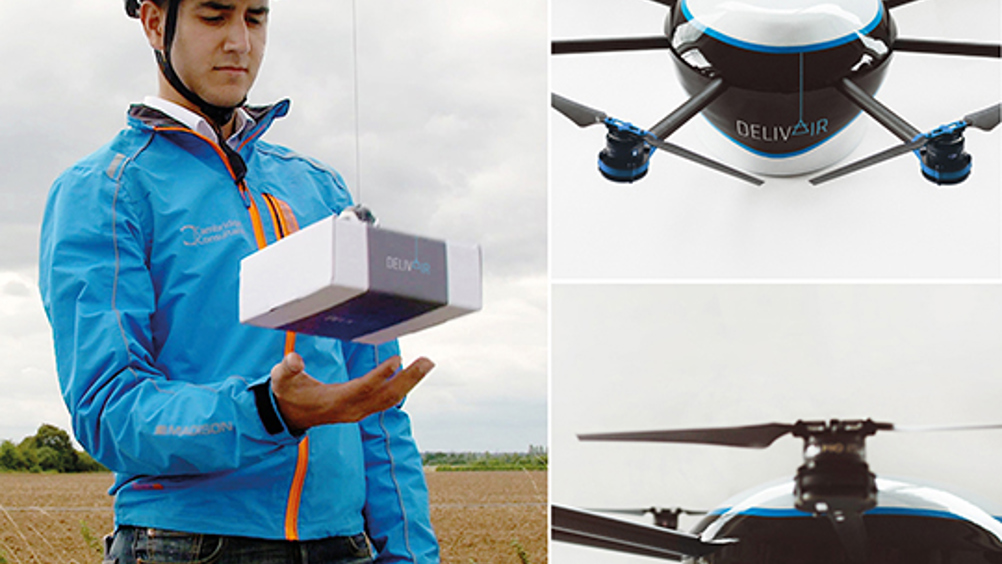New drone concept delivers straight into your hands
Cambridge Consultants has developed a new drone delivery concept that is able to place items directly into customers’ hands, without the need for postcodes or landing mats.

DelivAir uses the GPS on a person’s smartphone to pinpoint their location, with the drone receiving updates in flight to track if someone is on the move. Once within visual range, the drone switches to precision optical tracking and a 3D imaging and ranging system to locate and authenticate the recipient, who also receives an alert that the delivery is imminent.
As the drone hovers directly above, the LED flash on the customer’s smartphone sends a coded message to verify identity. The package is then lowered into the recipient’s hands, using a stabilising winch to keep it steady. Once in the customer’s hands, the package is unhitched by the recipient and the drone returns to its base.
“Drone delivery is fast and ideal for something that is needed immediately. In that case, a consumer wants a delivery directly to them as a person – not to a location,” said Nathan Wrench, head of the industrial and energy business at Cambridge Consultants.
Register now to continue reading
Thanks for visiting The Engineer. You’ve now reached your monthly limit of news stories. Register for free to unlock unlimited access to all of our news coverage, as well as premium content including opinion, in-depth features and special reports.
Benefits of registering
-
In-depth insights and coverage of key emerging trends
-
Unrestricted access to special reports throughout the year
-
Daily technology news delivered straight to your inbox










Water Sector Talent Exodus Could Cripple The Sector
Maybe if things are essential for the running of a country and we want to pay a fair price we should be running these utilities on a not for profit...